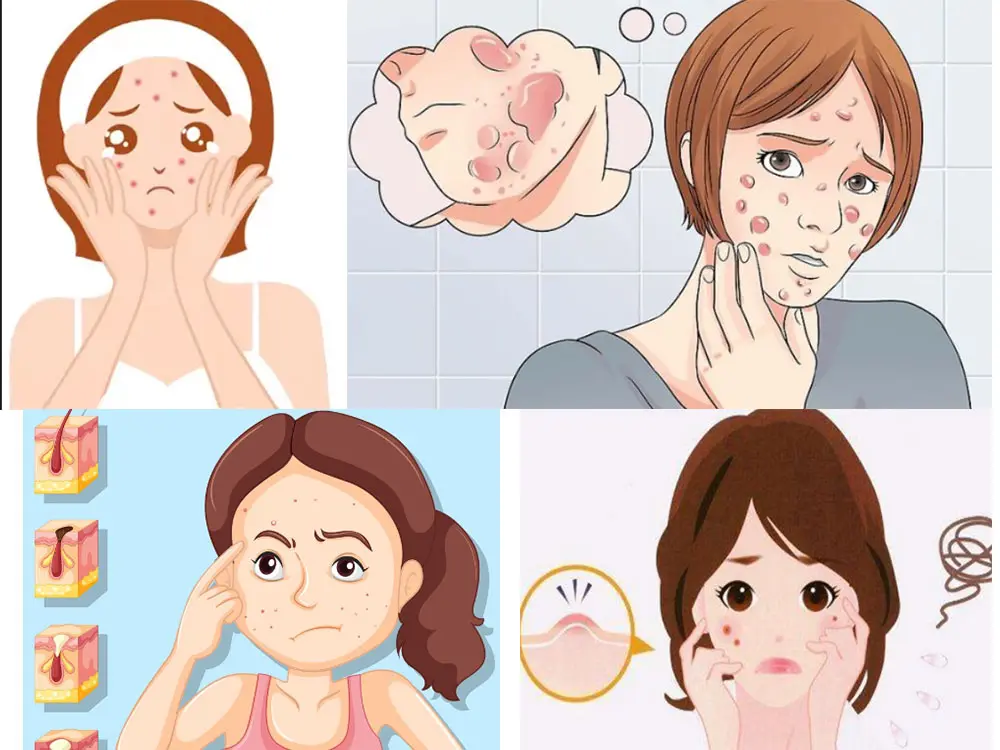Acne is a chronic inflammatory skin disease of the hair follicle sebaceous glands. Its pathogenesis is complicated,
mainly related to the increase of androgen level, strong secretion of sebaceous gland, abnormal keratosis of sebaceous duct of hair follicle,
propionibacterium acnes proliferation and inflammatory reaction.
During puberty, the level of male hormones in the body increases, which promotes the enlargement of sebaceous glands and the secretion of sebum.
Too much sebum cannot be discharged smoothly, and it accumulates in the mouth of the hair follicle, forming acne. At the same time,
propionibacterium acnes proliferate in this sebose-rich environment, decompose sebum and produce free fatty acids,
stimulate the inflammatory reaction of hair follicles and surrounding tissues, and then appear papules, pustule, nodules, cysts and other types of acne skin damage.

Traditional treatment for acne
At present, there are many treatments for acne, including topical drugs, oral drugs, physical therapy and so on. However,
these traditional treatments have certain limitations.Topical drugs such as retinoids, benzoyl peroxide, antibiotics, etc.,
although they have certain effects on mild acne, they need to be used for a long time, and some patients may have adverse reactions
such as skin irritation, dryness, and desquamation. Oral drugs such as antibiotics and isotretinoic acid have good therapeutic effect on moderate
and severe acne, but long-term use of antibiotics is easy to lead to bacterial resistance, and isotretinoic acid has more serious adverse reactions,
such as teratogenesis, elevated blood lipids, liver function damage, etc., limiting its clinical application.
Physical therapy such as photodynamic therapy and laser therapy can effectively improve acne symptoms,
but the treatment cost is high, and multiple treatments are required, and adverse reactions such as pain,
erythema and edema may occur during the treatment process, and patients’ compliance is poor.
Mechanism of hypochlorous acid in treating acne
Bactericidal and anti-inflammatory: hypochlorous acid has a strong oxidation ability, can penetrate the cell wall of bacteria,
and the oxidation reaction with the enzymes, proteins and other biological macromolecules in the bacteria,
destroy its structure and function, so as to quickly kill pathogenic bacteria such as propionibacterium acnes.
Studies have shown that the bactericidal effect of hypochlorous acid on propionibacterium acnes is significantly better than
that of traditional antibiotics, and it is not easy to develop resistance. At the same time, hypochlorous acid can also inhibit the release of
inflammatory mediators, reduce the inflammatory response of hair follicles and surrounding tissues, and relieve acne redness, pain and other symptoms.
Regulating skin microecology: There is a complex community of microbes on the surface of the skin, which are normally in balance
and play an important role in maintaining skin health. However, in acne patients, propionibacterium acnes and other pathogens proliferate,
breaking the balance of skin microecology. While killing pathogenic bacteria, hypochlorous acid does
not significantly affect the normal flora on the skin surface, which helps to restore the balance of skin microecology
and create a good environment for skin self-repair.
Promote skin repair: hypochlorous acid can promote the metabolism of skin cells, enhance the vitality of skin cells,
and accelerate the repair of damaged skin tissue. It can stimulate fibroblasts to synthesize collagen and elastic fibers,
increase the elasticity and shine of the skin, and reduce the formation of acne scars. In addition, hypochlorous acid also
has a certain moisturizing effect, can maintain skin moisture, improve skin dry, rough and other problems.

